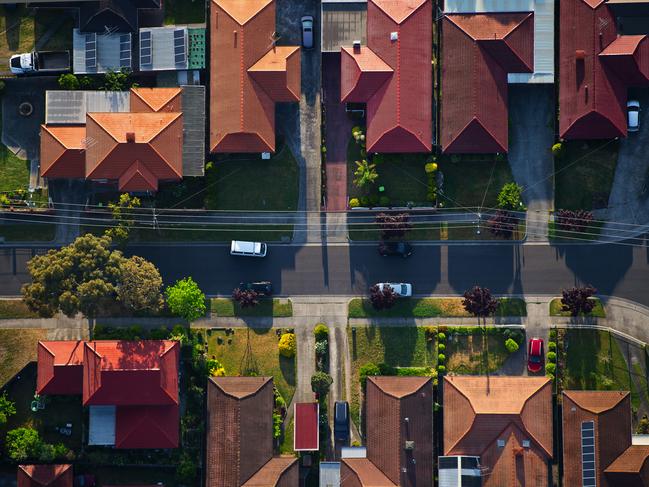How experts know a home will go up in value
According to the experts, there are a few things you need to know about the suburb and the property before you buy – as well as four big myths that need clearing up once and for all.
Property
Don't miss out on the headlines from Property. Followed categories will be added to My News.
The term “safe as houses” may imply that property prices always go up, but as the last 12 months have shown, capital growth is not always guaranteed.
So, how do you know you’re buying a home in an area where prices are going to grow? According to the experts, there are a few fundamentals to look out for:
THE NEED FOR CAPITAL GROWTH
It’s important to ensure each home purchase comes with potential for capital growth, said Hotspotting.com.au director Terry Ryder. “If it doesn’t grow or reduces in value then you’re going to end up with little or negative equity,” he said, meaning if you need to sell the property, you may not break even.
In contrast, if you buy in an area where house prices grow, the equity generated means more money when you sell and greater potential for a future investment.

WHAT TO LOOK FOR
Mr Ryder said buyers should look for “the basics and the special extras” when determining the capital growth potential of a suburb. “The basics are things such as schools, shops and good transport links,” he said.
The special extras, he said, are signs of a growing local economy as well as infrastructure projects that will both create jobs and improve the amenity of the area.
“That might be new schools being built, a major new hospital, new rail links or upgrades to existing ones,” he said.
Buyers can research future infrastructure projects by keeping up to date with local council and state government developments.

POPULARITY PAYS
Property investor and chair of The Property Investment Professionals of Australia (PIPA) Nicola McDougall said while you can add value to a property over time through renovations, it is important to purchase in a suburb where there is consistently strong demand.
“Generally, homeowners buy properties in locations that suit their purposes,” she said. “However, every property purchase should be strategic.”

Propertology head of research Simon Pressley said the same is true when it comes to the type of property you buy.
He said freestanding homes appeal to the largest cohort of buyers and have good potential for future demand.
“There will always be more future buyers of a detached house than of a townhouse, a duplex or an apartment,” he said.
MORE: $65k earner’s clever move to get $1.85m in property
Miles Teller set to take off from California home
New twist in fraudster Melissa Caddicks’ home sell off

DEMAND VS DESIRE
Mr Pressley said demand is often confused with desire. While a property that looks aesthetically pleasing might be desirable for you to live in, it won’t necessarily appeal to all buyers.
In contrast, a property type that ticks all the boxes for the majority of buyers, such as a freestanding house with a northerly aspect in a quiet street close to amenity, is likely to experience higher demand.
“The ugly duckling freestanding house will have a hell of a lot more buyers down the track than the more aesthetically pleasing apartment that has the cafe at the ground floor,” Mr Presley said.

REAL ESTATE’S BIGGEST CAPITAL GROWTH MYTHS
According to the experts, there are a range of myths around capital growth that need to be cleared up once and for all. Here are their top picks:
1. PRICES RISE FASTER IN WARM AREAS
Propertology’s Simon Pressley said this myth is born from preference rather than fact. He said there was “zero evidence” warmer climates got more growth. “Hobart had the highest average capital growth rate over the last 20 years, and that’s a cool climate,” he said.
2. BIG CITIES GET MORE GROWTH
Mr Pressley said there are no definitive trends over time that indicate regional areas get less growth. “The fact is that the best performing property markets every single year are among those 400 regions, not among the capital cities.”

3. POPULATION GROWTH IS THE MAIN DRIVER
“This is factually incorrect,” said Mr Pressely. “We’ve only got to go back to the two years that international borders were closed. We had the lowest rate of population growth in more than 100 years, but yet in those same two years we had the second biggest property boom in 230 years.”
4. YOU CAN ‘TIME’ THE MARKET
PIPA’s Nicola McDougall said the majority of people, including experts, can’t pick the top or bottom of the market until it has passed. “Trying to time the market generally results in people not doing anything at all or being stuck perpetually in analysis paralysis,” she said. “As long as you are purchasing with a long-term mindset, then the best time to buy is always when it’s the right time for you.”
More Coverage
Originally published as How experts know a home will go up in value




